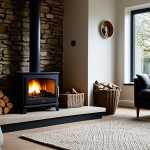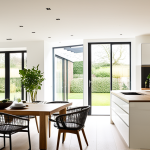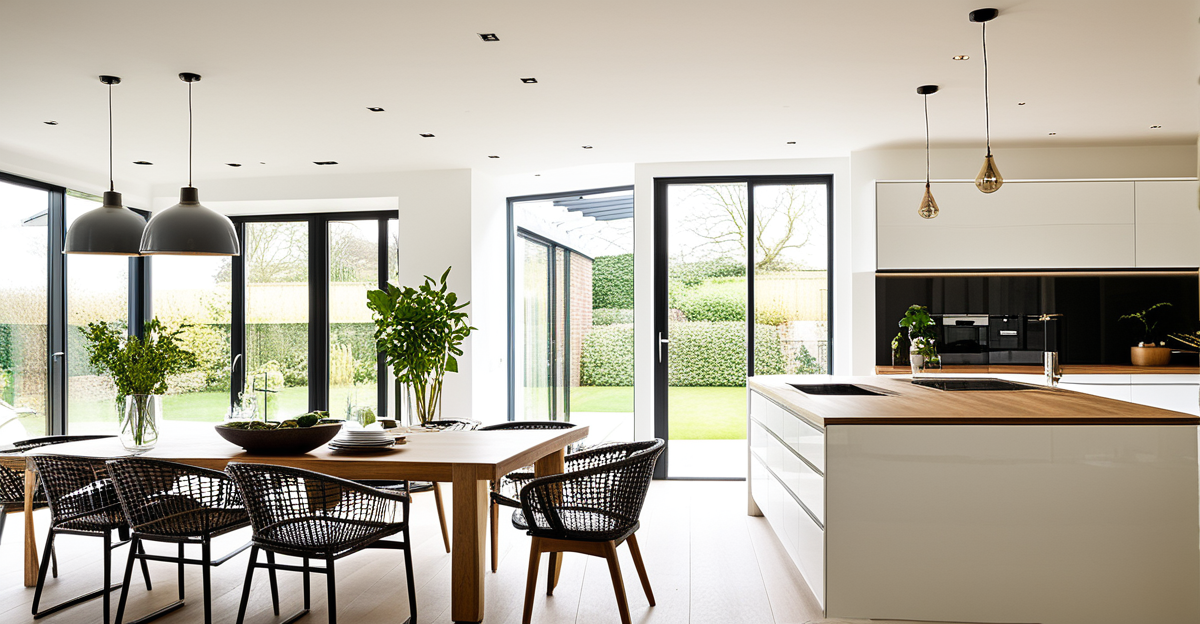Overview of Energy Efficiency in UK Home Design
Energy efficiency in UK home design focuses on reducing energy consumption while maintaining comfort and sustainability. This concept ensures that homes use less energy for heating, cooling, and lighting, which is vital in addressing environmental concerns and lowering utility costs. As energy efficiency becomes a priority, modern UK homes increasingly incorporate technologies and design strategies that minimise waste and optimise performance.
Recent trends reflect homeowners’ growing intent to lower energy bills and carbon footprints. These include improved insulation, smart energy management, and the adoption of renewable energy systems. The emphasis on sustainability has transformed building practices, encouraging the use of materials and methods that favour long-term energy savings.
Also read : How Can You Transform Your UK Home into a Cozy Oasis for the Winter Months?
Key areas impacting energy performance in UK home design include the building envelope’s thermal properties, efficient heating and ventilation systems, and the integration of smart technologies. Together, these contribute to a comprehensive approach that balances comfort, environmental responsibility, and cost-effectiveness, aligning with current government policies and consumer expectations.
Insulation and Building Envelope Innovations
Exploring the latest insulation trends reveals significant advances in wall, roof, and floor materials used both in new builds and retrofits. High-performance insulation materials minimise heat transfer, crucial for maintaining stable indoor temperatures and reducing energy consumption. Modern UK home design increasingly incorporates airtight construction techniques combined with double and triple glazing to enhance the building envelope’s thermal performance. These features prevent unwanted heat loss, reducing reliance on heating systems.
Also to see : How Can You Incorporate Sustainable Practices into Your UK Home Life?
Airtightness works by sealing gaps and joints to stop drafts that can significantly increase energy usage. Double and triple glazed windows add layers of insulation, with triple glazing especially effective in colder climates. Together, these innovations create a more controlled internal environment, improving both comfort and energy efficiency.
Recent examples from UK residential projects showcase these insulation improvements in action. Some new homes achieve exceptionally low U-values, indicating superior insulation quality. Retrofitting existing homes with upgraded insulation and window systems is also becoming more common, reflecting growing awareness of the impact the building envelope has on overall energy use. These trends underscore insulation’s pivotal role in sustainable, energy-efficient UK home design.
Adoption of Smart Home Technology
Smart home technology plays a pivotal role in enhancing energy management within modern UK homes. Central to this innovation are smart thermostats and automated heating controls that adjust temperatures based on occupancy patterns, significantly reducing wasted energy. By learning user habits, these systems maintain comfort while optimising energy use.
Real-time energy monitoring through sensors provides homeowners with immediate feedback on their consumption, enabling informed decisions to cut excess usage. This precise data helps identify patterns, allowing for more efficient scheduling of heating, cooling, and electrical appliances.
Automation systems extend beyond heating control; intelligent lighting adjusts brightness levels or switches off when rooms are unoccupied, contributing to overall energy savings. Similarly, appliances integrated into these systems operate during low-demand periods, reducing peak energy loads.
The combined effect of these technologies supports a more efficient, sustainable lifestyle without sacrificing convenience. As UK home design increasingly embraces smart technology, the resulting improvements in energy efficiency represent a clear response to consumer demand for sustainability and cost-effective living.
Passive Design Principles in Modern UK Housing
Passive design harnesses natural energy flows to improve comfort and reduce energy demand in UK homes. Key elements include building orientation, daylighting, and ventilation. By orienting homes to maximise passive solar gains, sunlight warms interiors during colder months, cutting heating needs. South-facing windows capture more sunlight, while shading devices prevent overheating in summer.
Daylighting reduces reliance on artificial lighting by optimising window placement and room layout. This not only saves electricity but also enhances occupant wellbeing through increased natural light. Well-planned daylighting considers window size, glazing type, and internal reflectance to balance light distribution and minimise glare.
Natural ventilation promotes airflow, limiting the need for mechanical cooling and improving indoor air quality. Cross-ventilation, achieved by positioning windows and vents on opposite walls, enables effective airflow. Stack ventilation takes advantage of warm air rising to create passive air movement, cooling spaces without energy use.
Projects following passive house principles demonstrate substantial energy savings, often reducing heating demand by over 75%. These homes combine airtight envelopes with passive strategies to achieve outstanding thermal comfort and sustainability. By adopting passive design principles, UK home design delivers energy-efficient homes tailored to the local climate and occupant needs.
Sustainable Materials and Construction Methods
Sustainable materials are transforming UK home design by lowering the environmental impact and enhancing energy efficiency. These materials often include recycled content, locally sourced timber, and products with low embodied energy, meaning less energy is used in their extraction and manufacture. This reduces the carbon footprint associated with building and supports local economies.
Eco-friendly construction methods, such as timber-frame and prefabricated modular systems, are gaining traction due to their speed of assembly and precision. These methods minimize waste on-site and often offer better insulation performance compared to traditional brick-and-mortar techniques. For example, timber-frame homes naturally provide thermal mass, improving heat retention and reducing energy consumption.
The integration of sustainable materials and construction methods not only aligns with the UK’s sustainability goals but also contributes to long-term energy savings for homeowners. Reduced energy demand during both the building phase and the home’s operational life makes these approaches increasingly attractive. In addition, these practices facilitate higher standards of quality control and durability, proving that sustainability and practicality can go hand in hand in modern UK home design.
UK Regulations and Incentives for Energy Efficiency
UK building regulations set strict energy standards to ensure new homes and renovations meet minimum efficiency requirements. These regulations drive builders to incorporate high-performance insulation, airtight construction, and efficient heating systems. For example, Part L of the Building Regulations requires a lowered carbon emission rate for dwellings, pushing designers towards sustainable solutions that reduce energy consumption significantly.
Government incentives further encourage adoption of energy-efficient measures in UK home design. Programs such as grants and subsidy schemes help offset costs for homeowners installing renewable energy systems or upgrading insulation. These incentives align with national sustainability goals to reduce carbon footprints across the residential sector.
By enforcing compliance and providing financial support, UK building regulations stimulate innovation in building materials, technologies, and practices. This ensures homes are resilient to climate challenges while offering long-term savings. The dual approach of regulation and incentive has proven effective in uplifting energy performance across a growing number of UK homes, creating a more sustainable housing stock in line with modern environmental priorities.
Practical Benefits and Measured Outcomes for Homeowners
Energy-efficient UK home design delivers tangible benefits to homeowners, primarily through energy savings and enhanced comfort. Studies show that homes incorporating modern insulation, smart technologies, and passive design can reduce heating bills by up to 30-50%, representing significant cost relief. These savings stem from lower energy consumption and improved temperature regulation.
Case studies confirm this. For instance, homes fitted with upgraded insulation and smart thermostats consistently report reduced monthly energy use. Residents also highlight better indoor air quality and more stable temperatures, contributing to year-round comfort. Moreover, these improvements often increase property values by appealing to eco-conscious buyers.
Beyond cost, homeowners benefit from reduced environmental impact, aligning with broader sustainability goals. Lower energy demand lessens carbon footprints, supporting the UK’s commitment to climate action.
Experts emphasize the importance of integrated approaches combining insulation, automation, and passive design to maximise benefits. They stress that ongoing monitoring and maintenance are crucial to sustaining energy savings over time.
In summary, the practical benefits of energy efficiency in UK home design extend well beyond immediate cost reductions, offering lasting comfort, environmental responsibility, and increased property desirability. These outcomes encourage homeowners to prioritise sustainable upgrades in their residences.





